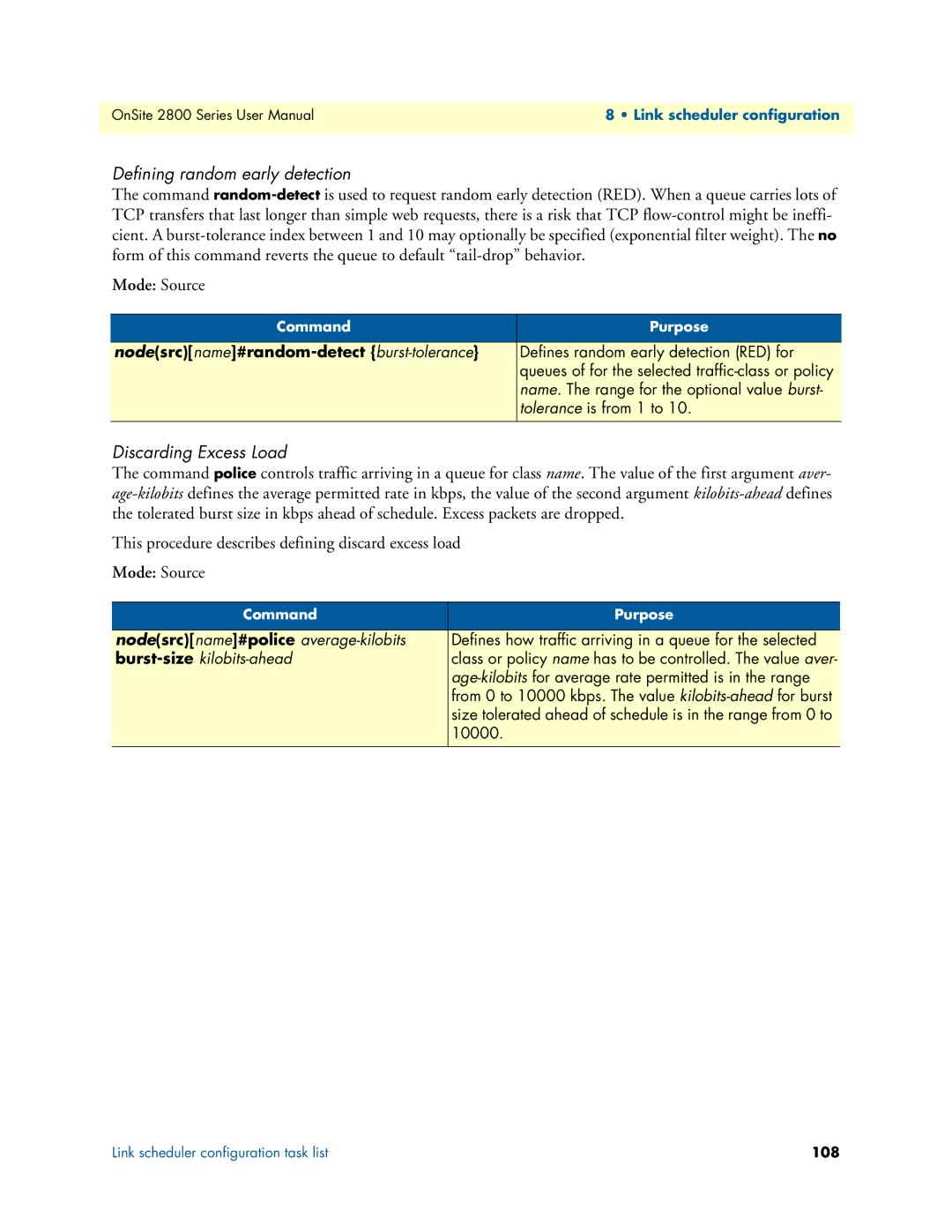OnSite 2800 Series User Manual | 8 • Link scheduler configuration |
|
|
Defining random early detection
The command
Mode: Source
Command | Purpose |
|
|
| Defines random early detection (RED) for |
| queues of for the selected |
| name. The range for the optional value burst- |
| tolerance is from 1 to 10. |
|
|
Discarding Excess Load
The command police controls traffic arriving in a queue for class name. The value of the first argument aver-
This procedure describes defining discard excess load
Mode: Source
Command | Purpose |
|
|
node(src)[name]#police | Defines how traffic arriving in a queue for the selected |
class or policy name has to be controlled. The value aver- | |
| |
| from 0 to 10000 kbps. The value |
| size tolerated ahead of schedule is in the range from 0 to |
| 10000. |
|
|
Link scheduler configuration task list | 108 |
